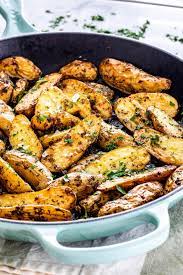This topic can inspire/aggravate people from all over the BBQ country, with indifference to love or hate. Is it used while cooking in the pit, is it served over or on the side? In the Carolinas they love their vinegar mustard-based sauce, while Kansas City loves the tomatoes. Texas loves the spicy heat. In fact, in the Lone Star State you won't even get BBQ sauce unless you ask for it. Your meat comes in a brown paper wrapper with a roll of paper towels on the table. Sometimes you get plastic silverware.
Let's break it down to the regional differences. Carolina BBQ sauce is generally known for its sweetness, particularly in the mustard-based style. It often incorporates ingredients like cane sugar, molasses, and honey, along with vinegar and yellow mustard, to create a sweet, tangy, and spicy flavor profile. This can differ from North to South Carolina. There is even a Carolina Gold Sauce. It is tangy, with a zippy edge that makes it totally irresistible.
Alabama has its own unique blend, called White Sauce. Alabama White Sauce is a mayonnaise-based barbecue sauce commonly used with barbecue chicken, an Alabama specialty. Typical ingredients of white sauce include vinegar, lemon juice, salt, pepper, cayenne pepper, and horseradish.
Kansas City BBQ Sauce is known for its thick, tomato-based, and sweet flavor, with a balance of sweetness and tanginess that is often achieved with molasses or brown sugar. It's a key component of the regional style, known for its balance of sweet and tangy flavors.
Finally, we come to Texas BBQ Sauce. There are a few key ingredients that make Texas BBQ sauce unique. It has a deeper, smokier flavor, and often includes cumin and chili powder, which give the sauce a bit of a kick. Texas BBQ sauces are usually made with vinegar or the addition of another acidic ingredient rather than ketchup or tomato paste. Again, sometimes coated on ribs for the final cook, but usually available only on the side for brisket and pork.
Which brings us to California, and much of the West Coast. The Santa Maria Grill Crowd has its own rewards, but the rest of the West Coast are just dilettantes. These folks do not apologize for their own brand of taste. California tomato sauce, packed from fresh tomatoes.....not from concentrate. Ingredients: Vine ripened fresh tomatoes, salt, onion powder, garlic powder, red pepper and naturally derived citric acid.
Yes, they all look similar, but taste is everything. To each his own, so to speak. Throughout the country many pitmasters have their own blend for backyard cooking to competitions. I am no different. I do not compete but do blend my own. When I first started BBQing I used commercial 'whatever'. Once I bought my first wood pit 32 years ago (which I still own) things changed. I started out with KC Masterpiece which was very good. I evolved into Bullseye adding cayenne, liquid smoke, garlic, honey, and a bit of Worcestershire Sauce. This was my mainstay for about 22 years.


About 12 years ago I sampled some Sweet Baby Ray's and although I don't normally like VERY SWEET BBQ sauce, it had the basics of what I was looking for. Now I utilize the original recipe sauce with two exceptions: for Pork or Chicken I add (for each bottle of sauce) 2 teaspoons KOSMOS Killer Honeybee Rub and 2 teaspoons Meat Church Honey Bacon Rub. For beef I add 2 teaspoons KOSMOS SPG and 2 teaspoons Coopers Blend. I like to use Coopers Old Time as they serve the best brisket I have ever eaten. You can find these products at:
Everybody to his own tastes, flavor profiles, and expected outcomes. Some Q is best spicy, some creamy and subtle, some tomato and honey, and some even vinegary. I have tried and never liked the Alabama White Sauce. No one's fault. But please feel free to experiment and find your own blend, taste, and satisfaction. BBQ is an art of each individual cut of meat yet enjoyed as a love of family.
"Barbecue sauce is like a beautiful woman. If it's too sweet, it's bound to be hiding something."
Lyle Lovett









.jpg)
.jpg)
.jpg)









.jpg)











.jpg)















